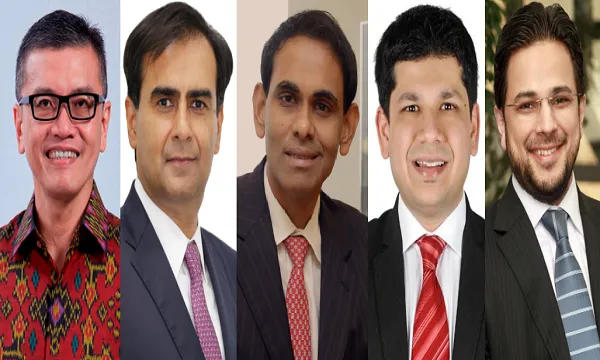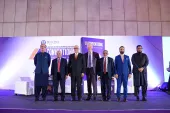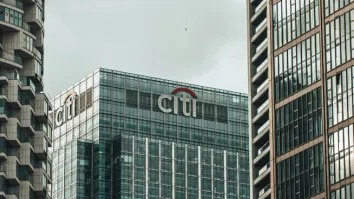
Islamic banks turn to digital to serve underbanked Asian markets
Check out what OCBC NISP, Bank Dhofar, and CIMB Islamic have to say.
When the Shariah business unit of Bank OCBC NISP was coming up with a plan to increase market share in Indonesia and raise its competitiveness against traditional banks, it was convinced that doubling down on digitisation was the best move. The bank developed a robust electronic channel facility to deliver services such as ATM, mobile banking and internet banking, and other Islamic banking executives are similarly viewing digitisation as the key to propel market growth in Indonesia and the rest of high-growth Southeast Asia.
“As we know, Indonesia is the largest Muslim population in the world, scattered in many islands. The e-channel was a starting point of digitalisation for banking and an opportunity to become more efficient and have the ability to serve customers across urban areas in Indonesia,” says Andrae Krishnawan W, director of network group at OCBC NISP.
He says the Shariah business unit has been working hard to reach the same standard and service as conventional banking for electronic channels, especially now that customers demand easier ways to do banking transactions.
“In today’s fast-paced business world, digitisation has become a necessity,” says Sohail Niazi, chief Islamic banking officer at Maisarah Islamic banking services of Bank Dhofar.
“As for the Islamic banking sector, we see more financial transactions taking place via mobile apps, smart devices and internet banking. This pushes us to be more innovative and to walk the extra mile to fulfil the needs of our customers and meet their requirements,” he adds.
Niazi reckons that effectively using the latest technology and tapping into digitisation gives a large advantage not just for banks, but businesses of all kinds. “Successful businesses in all industries have made digitisation an integral part of their business strategy to make life easier for customers andcreate value for shareholders.”
For Mohamad Safri Shahul Hamid, deputy chief executive officer at CIMB Islamic, digitisation presents a window for the Islamic banking sector to leverage on the advances to catch up with traditional banks and fintech companies, and pull ahead of their peers.
Digitisation “is both an opportunity and a disruption,” says Safri. “It is a disruption for Islamic banking sector, where most players are lagging behind conventional banks and fintech in offering and providing consumers with simple processes, instant accessibility through mobile applications and fast turn-around times.”
“This disruption is also a clear opportunity for Islamic banking players to leapfrog ahead with innovative Shariah-compliant products and solutions that efficiently communicate with consumers and to set up simple and cost-effective Shariah-compliant digital and mobile platform,” he adds.
Mixed year
The emergence of digitisation as one of the defining strategies for Islamic banks comes in a year where issuance of Islamic bonds or sukuk has slowed. For more optimistic analysts like Nitish Bhojnagarwala, AVP and analyst at Moody’s, the prospects of Islamic finance remain strong despite the issuance slowdown. Long-term growth will be driven by increasing demand growth in key markets and easing regulation across the globe.
“2016 has been a mixed year for Islamic finance so far,” says Bhojnagarwala. “Although growth trends in Islamic banking assets remain strong, growth in sukuk (Islamic bond) issuance has slowed whilst growth in Takaful insurance premiums has also pulled back from very rapid growth levels as the market matures,” he adds.
Even though Sukuk volumes remained flat for the first half of 2016 at around $40 billion due to lower short-term issuances by the Malaysian government and the souring economic conditions in emerging markets, Bhojnagarwala expects increased sukuk issuance into 2017 from sovereigns, banks and corporates in the Gulf on back of increased regional financing needs amid lower oil prices.
Growth in the Takaful insurance sector is also slowing as the market matures, but will remain at double digit levels into 2017, and Bhojnagarwala says low levels of insurance penetration suggests significant headroom for further expansion in the coming years, especially as more populations become affluent and embrace the concept of Takaful.
Bhojnagarwala reckons that there has been continuing retail demand for Shariah-compliant financial services in Muslim-majority countries. Core Islamic markets has experienced strong financing growth of around 13% in 2015 and 6% for the first six months of 2016.
Islamic banking assets have also posted solid growth due to the rise of proactive government legislation. Bhojnagarwala says that Islamic banks in some jurisdictions now have the opportunity to attract more rural, orthodox populations who were previously underbanked and include them in the financial system. “Oman is a notable success story as it has achieved a level of Islamic banking penetration that is higher than countries with a far longer history of the sector,” he adds.
He expects Islamic banking to continue to face challenges in core Islamic markets, particularly in the Gulf Cooperation Council countries due to lower oil prices, but other analysts expect other regions such as Southeast Asia to step up.
Extraordinary opportunities
Despite the prevailing macroeconomic and political challenges that in emerging markets, there is significant unmet demand for Islamic banking in these markets, especially among the underbanked rural populations.
Digitisation is helping Islamic banks reach these populations and provide them with products that are more aligned with their ethical codes, according to analysts. The region is also seeing positive developments such as the formation of the ASEAN Economic Community (AEC), and Indonesian government’s increased determination to support Islamic banking and finance.
“Forward looking industry projections are generally positive,” says Ashar Nazim, partner, global Islamic banking center at EY in the World Islamic Banking Competitiveness Report 2016.
“There are a number of extraordinary opportunities in the making that will influence the regionalisation of the industry. Emerging markets will remain central to global growth over the next decade,” says Nazim. “In Southeast Asia, the coming together of AEC in 2015 is one of the key milestone towards a larger, integrated financial market.”
Bank Dhofar’s Niazi reckons Malaysia has already become a major hub for Islamic banking and finance, and Indonesia has a huge potential to become an Islamic market leader especially if the sector receives similar strong support from the government. “If Indonesia puts together a proper roadmap and a comprehensive strategy like Malaysia did, it can make a huge impact on the Islamic finance Industry on a global scale. After all, it has a larger Muslim population than any other country in the world,” says Niazi.
In 2014, the Islamic finance industry grew to US$41.8 billion (Rp 559 trillion), or 3% of total overall finance industry assets worth US$1.2 trillion (Rp 16,380 trillion), and Indonesia is expecting its market share of Islamic banking to grow from 3% today to 11% by 2020, according to CIMB Islamic’s Safri. Indonesia’s Islamic finance growth rate since 2010 at 139% surpassed the conventional sector growth at 42%, with the biggest contributors to Islamic finance industry are Islamic banking (50%) and sukuk (44%), compared with bonds (61%) and banking (35%) for the whole financial industry.
Total Islamic finance assets grew 10% to US$46.2 billion (Rp617 trillion) in 2015, and for Safri, Islamic finance should only grow more as it comes in to meet the need of Indonesia’s infrastructure sector for new financial models.
Indonesia is also seeking to boost its sukuk issuance, although there is still a need to allot more resources in developing human capital and institutional framework to develop a deep domestic sukuk market. “In Indonesia, an ambitious, wideranging government master plan will drive growth, despite a shortfall of human capital,” says Bhojnagarwala, citing a recent positive announcement that 50% of all public financing will be Shariah-compliant in the next 10 years.
In photo (from left to right): Andrae Krishnawan W, Sohail Niazi, Mohamad Safri Shahul Hamid, Nitish Bhojnagarwala, Ashar Nazim,


















 Advertise
Advertise








